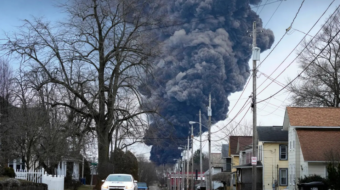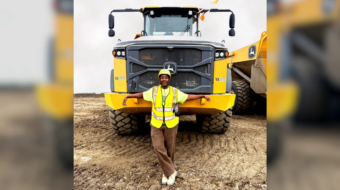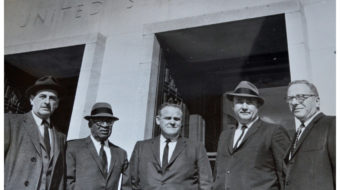Mine safety expert Jack Spadaro charges Crandall Canyon, Utah, mine owner Robert Murray with murder and the Bush administration’s Mine Safety and Health Agency (MSHA) with aiding and abetting.
“None of this should have happened,” Spadaro said, anger pushing aside his gentle West Virginia twang. “Murray murdered those miners in the collapse and, then, in the rescue. The rescuers were working in the same conditions that caused the collapse. MSHA is complicit. Murray is a criminal.”
In 2004, Spadaro retired after serving as director of the National Mine Health and Safety Academy, the main training center for federal mine inspectors. Under Spadaro’s leadership, inspector training increased and courses were upgraded. Enrollment increased from 17,000 to 30,000 a year.
Spadaro brought 38 years of coal mining engineering, environmental expertise, mine inspection and legal experience to the next generation of inspectors. He said the growing death in the mines results from Bush administration appointments and policies “to take care of the industry.”
In 2006, 47 miners went to work and never came home, the highest number of fatalities since 1995. As of Aug. 16, 17 miners have died at work, not including the six miners currently trapped in Utah.
On Aug. 6, the Crandall Canyon mine collapsed, trapping the six nearly 2,000 feet beneath a mountain. Despite continued “bumps” from the mountain, mine owner Murray ordered a rescue operation which, in addition to drilling from the top, had miners going into the collapsed entrance.
The coal rescuers removed coal trying to reach the trapped men. That coal is worth hundreds of thousands of dollars, which went to the company, Murray Energy. There was no second entrance or escape passage at Crandall Canyon.
Gary Jensen, an inspector Spadaro trained, died in the rescue effort, along with Dale Ray Black, 48, and Brandon Kimber, 29. Their deaths mark the first time in 100 years of coal mining in Utah that rescuers were killed.
“I talked to Gary and he warned Murray Energy that the operation was dangerous,” Spadaro said. Despite warnings and citations issued by MSHA in May, Murray Energy ordered miners to keep digging using the “retreat mining” technique.
“Murray bought this mine in August ’06,” Spadaro continued. “The previous company had ceased operations because they decided it was too unsafe. They had been mining coal using the responsible longwall method for years, and the only coal left was in the barrier pillars. They are huge, 120 feet high and 80 feet wide. That was the coal, or the profits Murray wanted. It’s mining on the cheap.”
It only took two days for Murray Energy to get permission for retreat mining approved by MSHA’s Western District.
Outrage by miners, local residents, elected officials and the United Mine Workers union reversed the announcement by Murray Energy that rescue efforts would cease and production would resume. Even though miners at Crandall Canyon are not members of the UMWA, federal legislation enables the union to represent miners when it comes to health and safety issues.
As of Aug. 28, a seventh hole is being drilled from the top of the mountain that is large enough to drop a robotic camera into the shaft seeking the trapped miners.
MSHA ordered Murray Energy to halt production at the nearby Tower Mine, at 2,200 feet deep, one of the deepest in the country. Murray laid off 170 miners and offered them jobs at operations in Illinois and Ohio.
Gov. Jon Huntsman Jr., who has been at the mining disaster site since Aug. 6, created the first-ever Utah Mine Safety Commission, which includes Dennis O’Dell representing the UMWA. The state commission has begun an investigation into the mine collapse.
In early September, the U.S. Senate will hold hearings on the disaster.
dwinebr696 @aol.com










